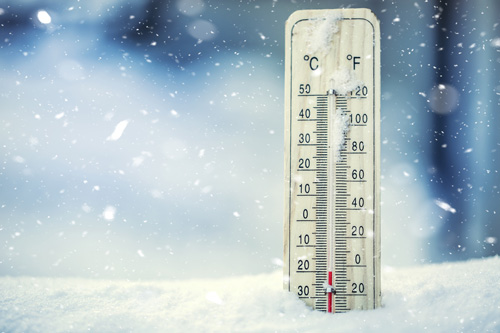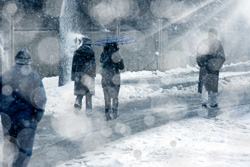
Extreme conditions don’t have to get in the way of enjoying all that a Canadian winter has to offer, but some precautions are needed to make sure that everyone stays safe outdoors.
Hypothermia and Frostbite:
Frostbite and hypothermia are two health risks of extreme winter weather. While minor levels of hypothermia and frostbite are common, reversible and may never cause damage, their more extreme presentations can be dangerous and even potentially fatal.
 Frostbite is when the skin and underlying tissue are exposed to the cold for a long period of time. Common areas affected are hands, feet, ears and nose. It can happen to exposed skin or even parts of the body protected by gloves or boots. Mild frostbite is also known as frostnip. Your skin may appear yellowish or white but will remain soft to touch and generally regain color when warmed up. With more severe frostbite, the skin to affected area will appear white and waxy, be hard to touch and nerve damage can occur causing numbness. Frostnip can be gently warmed with skin to skin contact, or using water just above body temperature, being cautious not to rub or use extreme temperature. Severe frostbite should be assessed by a medical professional.
Frostbite is when the skin and underlying tissue are exposed to the cold for a long period of time. Common areas affected are hands, feet, ears and nose. It can happen to exposed skin or even parts of the body protected by gloves or boots. Mild frostbite is also known as frostnip. Your skin may appear yellowish or white but will remain soft to touch and generally regain color when warmed up. With more severe frostbite, the skin to affected area will appear white and waxy, be hard to touch and nerve damage can occur causing numbness. Frostnip can be gently warmed with skin to skin contact, or using water just above body temperature, being cautious not to rub or use extreme temperature. Severe frostbite should be assessed by a medical professional.
Normally, the body works hard to stay at a normal temperature. When exposed to cold temperatures, it begins to lose heat faster than it can produce, causing a drop in the body’s temperature. This is known as hypothermia. Early hypothermia involves shivering, goosebumps on skin, fast breathing and numbness to the hands and feet. If left untreated it can become dangerous in later stages where the person becomes confused, movements become uncoordinated, breathing and heart rate decrease, and shivering may stop altogether. If mild seek shelter, remove any wet clothing, warming your body with blankets or skin to skin contact, and drink warm fluids. Severe cases require immediate medical attention and 911 should be called.
How to Stay Safe
Staying warm is the best way to avoid medical emergencies from extreme weather conditions. Dress warm in layers, wear socks, gloves, hat and scarf, stay dry and seek out shelter to warm up when needed. Check forecasts and planning ahead can help to prepare appropriately for the cold. Everyone can benefit from staying aware so that they can avoid risks and identify frostbite and hypothermia in early stages when it is easily reversed.
Some people end up in the elements under harsh conditions. Help to keep your fellow Canadians safe – consider donating old jackets or warm clothes to organizations that can distribute them, or assist those that can get hot food and drink to those in need. If you see someone stuck outside in dangerous temperatures, call 211 for help.
Health Canada Extreme Cold Tips: https://www.canada.ca/en/health-canada/services/healthy-living/your-health/environment/extreme-cold.html
Government of Canada Safety Tips: https://www.getprepared.gc.ca/cnt/rsrcs/sfttps/tp201101-en.aspx